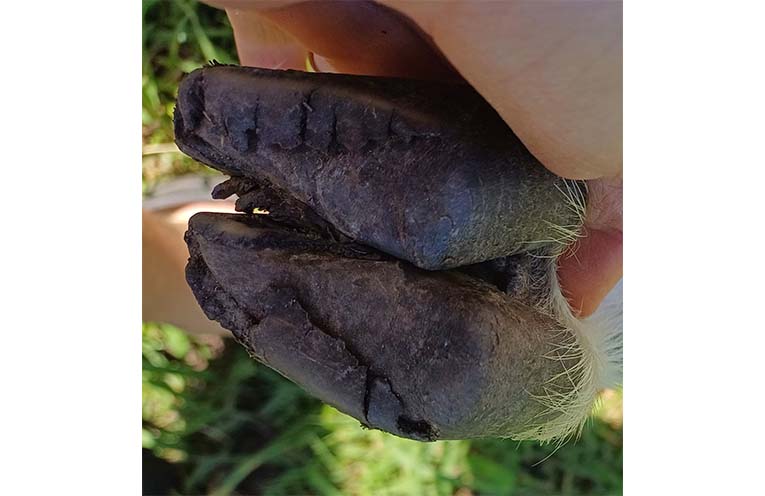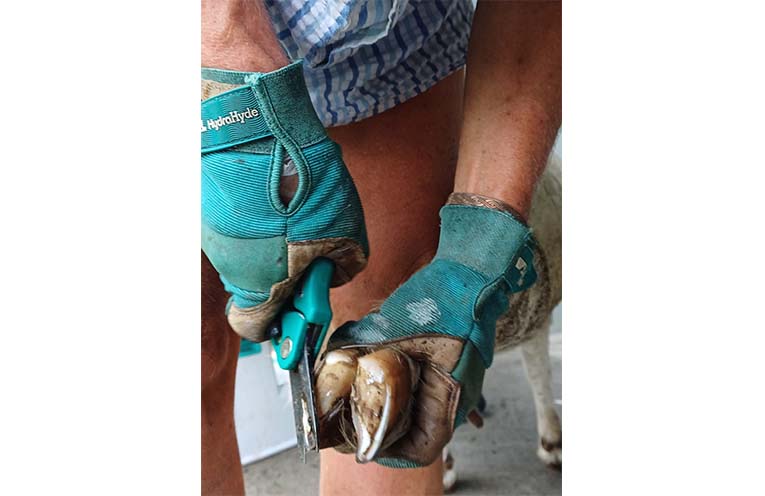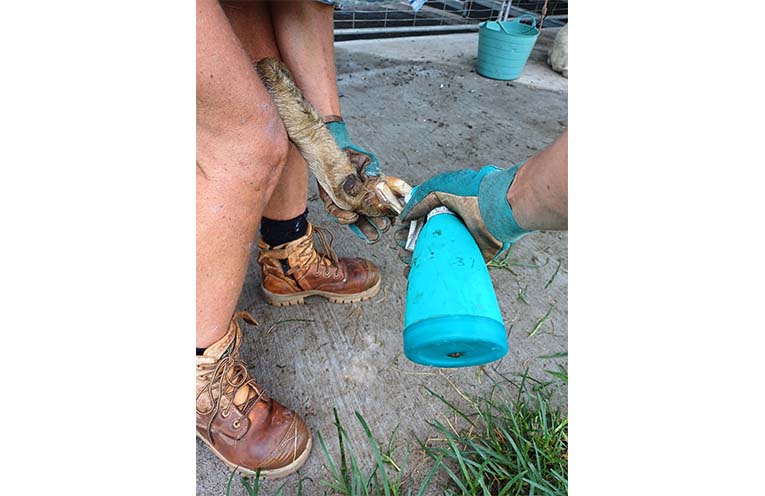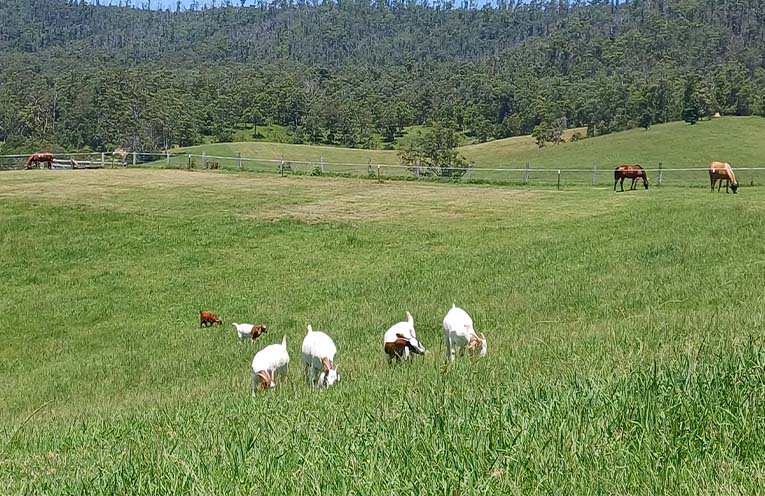
IT’S the time of year when hoof and foot problems affect livestock the most.
Recent rains have made a soil that is full of the microorganisms which can affect and infect imperfect hooves.
Many people purchase a goat or goats without a thorough understanding of the work that is required to maintain their health.
I was certainly one of those people.
I was shocked to learn how much of my valuable time could be spent on goat hoof trimming and troubles.
Goats in particular need regular trimming and checking unless they are being run on hard dry rocky ground.
Goats which are housed on grass and softer soils will usually need trimming every two to three months.
Fast forward nine years, more goats and all of us are older.
The task of getting through all the animals in one day has become an impossible one.
Each trim requires at least four hands (or two people) and takes 20 mins to half an hour; even more if the goat won’t stand still or one of you is not holding on tightly enough.
I usually try to do three or four animals in a session, rotating my attention around the flock so that everyone eventually gets seen regularly.
Trimming in wet weather is the easiest as the hooves are soft and easier to cut.
The downside is that it is also possible to trim too much.
Especially if you are new to the task, it is probably best to take small cuts in stages and remember that you can always come back to it in a few days or weeks.
As I said, it’s a two-person job for us.
The first person will grab the horns or the head of the goat and hold the animal securely.
If you have well-behaved goats, you could tie them to a wall but mine have attempted to hang themselves at times when I’ve done this.
The second person is the trimmer – that’s usually me.
I stand facing the back end of the goat and put the foot I am trimming tightly between my legs with the goat’s leg bent so that the sole of the foot faces up (but anything goes really, just hold on tight).
Clean out any debris with a hoof pick.
Starting on the sides of one of the toes, cut any overgrown pieces of the hoof wall.
There can be a lot of mud trapped under these.
Work up towards the toe to expose the lighter coloured sole underneath.
The heel can also be cut back.
Then, put the foot down to check that your work is flat and parallel to the coronary band (the line at the top where the hoof starts), readjusting and trimming a little more if needed.
It is best to trim the inside wall of the foot a little bit lower than the outside as this is how the animal would usually support its weight when standing.
With cracks or holes that aren’t causing lameness, I usually spray some hydrogen peroxide or something similar into them.
If the animal is lame and this treatment doesn’t improve the situation, keep the foot as dry as possible and consult a veterinarian.
Don’t worry, there will be another weekend next week to do the others.
Favourite goat quotes:
“If a fence can hold water, it can hold a goat”: Proverb.
“People are goats, they just don’t know it”: Chess McCartney.
“Never approach a goat from the front, a horse from the back or a fool from any side”: Proverb.
And then my husband’s personal favourite one:
“The more the billy goat stinks, the more the nanny goat loves him”: Proverb.
By Ned COWIE




